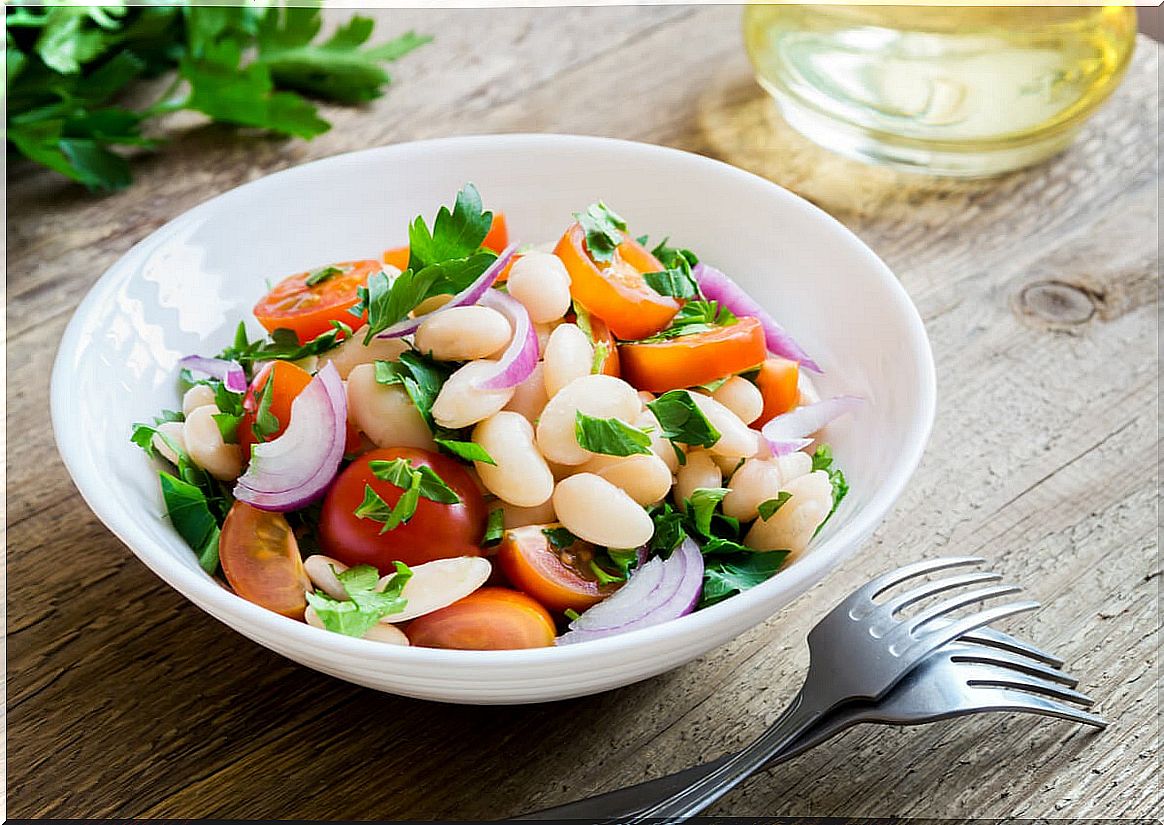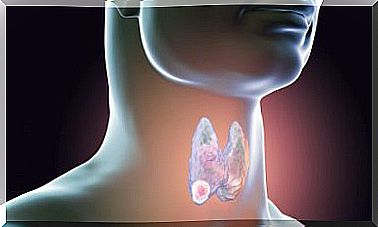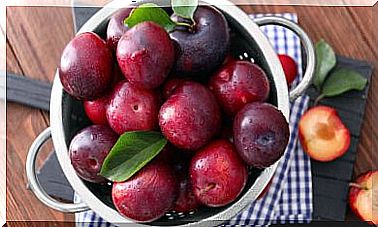White Beans: Benefits And Some Recipes
Cannellini , haricot, kidney bean, great northern or butter beans are some of the best known varieties of navy beans, whose consumption has spread around the world.
It is a legume with a high nutritional content and many health benefits that we present in the following article. You can continue reading if you want to discover 3 simple ways to prepare them.
White beans
White beans are one of the many variants of this plant (Phaseolus vulgaris) native to Latin America, where it continues to have the highest per capita consumption in the world. Hundreds of other shapes have appeared over time that come in multiple colors, sizes, and flavors.
Some of them have a “Protected Designation of Origin” and their cultivation and consumption are appreciated. Nowadays their intake is below what is recommended, so it is interesting to know them and introduce them again in the daily diet. Not only because it is an ingredient with a delicate flavor, but also because of the large number of recipes that can be prepared and the benefits they provide.
What nutrients do they provide?
Like all legumes, navy beans are an excellent source of nutrients. Not only do they provide fiber, protein, carbohydrates and minerals, but also the presence of fat and sodium is very low.
The amounts to be ingested depend on each person, age and physical activity. But with a standard ration of 80 grams of dried legume you get the following:
- 18 grams of protein: with all the essential amino acids that the body is not able to manufacture, although the amount of methionine and cysteine is low.
- 12 grams of soluble fiber: almost half of the 25 grams daily recommended for women and a third for men.
- Slow absorption carbohydrates.
- Minerals: iron, copper, calcium, zinc and magnesium.
- Folates and other B vitamins.
- Antioxidants

Benefits of white beans for health
Thanks to their nutritional makeup, navy beans and legumes in general have been associated with multiple health benefits. So much so, that the United Nations General Assembly proclaimed 2016 as the International Year of Pulses.
These are some of the positive effects that a regular consumption of white beans, within a healthy diet and lifestyle, can bring.
Prebiotic effect for the intestinal flora
White beans are a food with a special content of resistant starch, even more than some cereals. These are, in particular, by-products that are not absorbed in the small intestine.
In this way, when they reach the colon, intestinal bacteria break it down, resulting in short-chain fatty acids. These compounds feed the cells of the large intestine and play an important role in the metabolism of carbohydrates, fats, and proteins.
Diabetes and glycemic control
Fiber, the low glycemic index and polyphenols in navy beans could be responsible for their protective effect against type 2 diabetes. In a study published in the British Medical Journal it was observed that, compared to other foods rich in carbohydrates , white beans were the ones that caused a flatter glucose rise after eating.
That is why experts, such as the American Diabetes Association, strongly recommend the introduction of legumes on a regular basis in the diet of diabetics.
Metabolic syndrome
Consuming beans between 2 and 5 times a week has a positive effect on risk factors for metabolic syndrome, such as blood pressure, waist circumference or insulin control. Health authorities point to this situation as one of the main public health problems of the 21st century.
Cholesterol reduction
The presence of fiber and resistant starch are the key to making beans a good food to keep blood cholesterol levels at bay. The results are positive for total fat and LDL or bad cholesterol .
Although the improvements are often related to soy consumption, a 2012 compilation of studies found the same positive result for the other types of legumes.
Body weight control
The good nutritional profile of beans, along with the presence of fiber and protein, makes them a suitable food to maintain a healthy weight and an ally of weight loss diets.
Slowly absorbed carbohydrates, plus the aforementioned nutrients, present in all legumes, are known to promote a feeling of satiety, avoiding overeating. The authors of the National Survey of Health and Nutrition 1999-2002 in America affirm that people who consume legumes often have a better intake and smaller waist circumference.
Recipes to introduce white beans into the daily diet
Knowing different dishes that are easy to prepare and that can be adapted to all tastes is the best way to increase your intake of legumes. Here are 3 options.
1. Greek white bean soup
This dish, known by the name of fasolada , is one of the national recipes of the Greeks. A mixture of beans and vegetables, it is served as a main dish and can be served with bread, feta cheese and Kalamata olives.
The ingredients needed to prepare 4 servings are the following:
- 250 grams of dried white beans.
- 2 carrots
- 1 medium onion.
- 2 or 3 sticks of celery.
- 1/4 cup of olive oil.
- 250 grams of tomato sauce.
- 1 teaspoon of salt and 1 of pepper.
- 1 potato (optional) and 1 small red pepper (optional).
Since you collected them, follow these steps:
- Before starting it is necessary to soak the beans for about 8 hours. Strain, reject the water and reserve for the moment of cooking.
- Wash, peel and slice the onions, celery and carrots very thinly. Sauté them in a pan with 3 or 4 tablespoons of oil. Mix and fry for 2 minutes.
- Next, add the vegetables, beans, tomato sauce, bell pepper and potato to a large pot. Add enough boiling water to cover two fingers above the vegetables.
- Lower the heat, cover and cook for 45 minutes or until the beans are tender. A little before passing the time add the rest of the oil and season to taste.
Hummus
Variant of the oriental dish made with chickpeas, this is a recipe that is prepared at the moment and is an excellent appetizer. It can be served with pita bread or strips of raw vegetables.
To prepare it, it is necessary to cook the white beans for enough time so that they are soft and drain. Add 1 or 2 tablespoons of tahin , 1 pinch of salt and 2 cloves of garlic. Beat well in order to obtain a homogeneous mixture.
At the time of serving it is sprinkled with a drizzle of olive oil and a little chopped coriander or parsley, sweet paprika or a pinch of cumin.

Bean salad
One of the best ways to eat them, especially in the summer time. A fresh and nutritious dish that can be complemented with the desired ingredients.
To prepare it, you need 2 cups of white beans already cooked that are mixed with 250 grams of ripe tomatoes cut into cubes, 1 red pepper cut into thin strips and 60 grams of mozzarella cheese .
Then make the dressing with olive oil, 1 tablespoon of freshly squeezed lemon juice, 1 pinch of salt, 2 sprigs of fresh basil and pepper to taste.
Eating navy beans is often a good health bet
In order to eat a healthy diet, it is important to include legumes on a regular basis, whether they are beans, chickpeas or lentils. This is due, both to their contribution of nutrients, and to the benefits they provide.
They are of special interest to people suffering from diabetes and to vegans. In addition, regular consumption is associated with better body weight and lower blood cholesterol levels.
To prepare them, simply boil large amounts from time to time, as they keep well in the freezer in smaller portions. Another quick option is to always have jars of canned beans on hand.
The recipes in which they can be included are many, from salads to soups, through stir-fries or stews. They go well with vegetables and animal protein, such as eggs, cheese, or a little meat. So there are no excuses for not making them one of the usual dishes.








